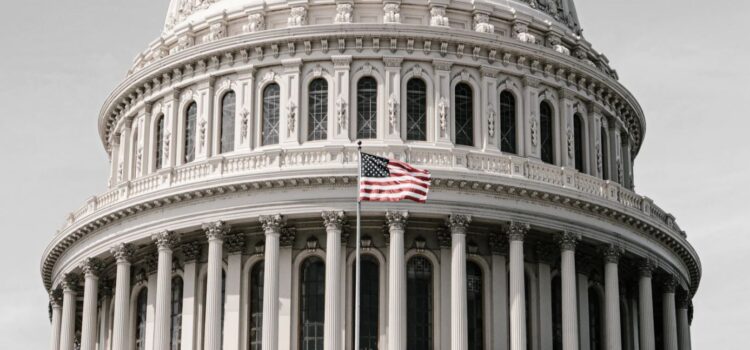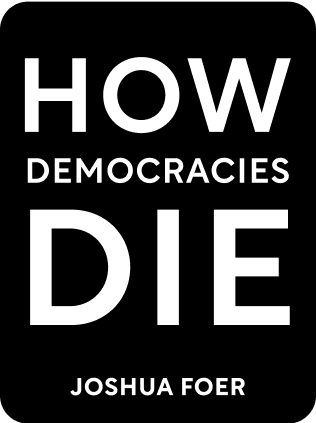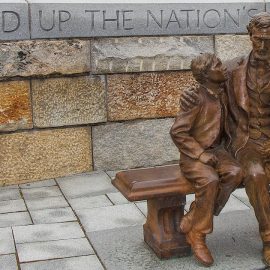

This article is an excerpt from the Shortform book guide to "How Democracies Die" by Steven Levitsky and Daniel Ziblatt. Shortform has the world's best summaries and analyses of books you should be reading.
Like this article? Sign up for a free trial here .
What are checks and balances in the U.S. government? Are they effective?
Checks and balances in the U.S. government is a system intended to prevent authoritarianism by distributing power equally. Each branch has its own norms and means of operating.
Read more about checks and balances in the U.S. government and what they do.
Checks and Balances in the U.S. Government
Given this brief overview of the ups and downs of democratic norms throughout American political history, it makes sense to look at how the political system is supposed to function. The US Constitution established a series of checks and balances across the three branches of government. The checks and balances in the U.S. government are meant to operate regardless of which party happens to control which branch.
Each branch of government has a role to play in upholding these norms. By the same token, each branch has the ability to violate them if it so chooses. Let’s look briefly at norms within the executive, legislative, and judicial branches.
Executive Norms
The Constitution does not clearly set the limits of presidential power. This can leave open gaps that can be exploited by a creative and unscrupulous executive. For example, presidents can issue executive orders on a range of policy matters, which enables them to effectively sidestep Congress and legislate on their own.
Because of this potential for abuse, norms are extremely important. Presidents must exercise some self-restraint, lest they set a dangerous precedent. And, for much of the 20th century, this is indeed what they did. Presidents generally resisted the opportunity to use the powers of their office to gain an advantage over the other two branches, even when adhering to such norms came at a political cost. This is all a part of how checks and balances in the U.S. government works.
Congressional Norms
Strong norms also govern behavior in the legislative branch. In the US Senate, the filibuster is a procedural device that can allow the party in the minority to require a ⅗ majority vote (60 votes) to end debate on a bill and proceed to a full vote.
In theory, this rule is in place to ensure that the minority party plays a role in governance and that the other party can’t exercise undiluted power with just a bare majority. But the filibuster can also be abused, giving the minority party extraordinary power to grind the business of government to a halt. It is a norm of institutional forbearance that prevents the minority party from abusing the filibuster to obstruct ordinary legislation—and for most of its history, parties adhered to this norm, allowing most legislation to come to a majority up-or-down vote and only invoking the filibuster rule in exceptional circumstances.
Another congressional power is to advise and consent on appointments made by the president to the cabinet and the Supreme Court. Unfortunately, the meaning of this power is unclear and open to interpretation. If it wanted to inflict maximum political damage on an opposite-party president, for example, the Senate could choose to block all appointments, even if doing so would render the government unable to perform basic functions.
As with the filibuster, norms of institutional forbearance have historically prevented the Senate from doing this. Between 1800 and 2005, only nine cabinet officers nominated by presidents were blocked by the Senate.
Judicial Norms
Between 1880 and 1980, the Senate confirmed 90 percent of presidential nominees to the Supreme Court, often by bipartisan supermajorities. This an important part of judicial norms, as is maintaining the number of judges on the court. When these things don’t happen, it can damage democracy. Take the example of FDR’s court-packing plan:
After winning a landslide reelection in 1936, Democratic President Franklin Delano Roosevelt proposed an ambitious plan to fundamentally reshape the constitutional order. Frustrated by the conservative Supreme Court’s practice of routinely striking down New Deal legislation, Roosevelt sought the power to force justices over the age of 70 to retire. The president would then have the authority to appoint their replacements, with the Court expanding in size from nine to 15.
While it would have been allowed under the rules of the Constitution (which, as we’ve seen, does not set limits on the size of the Court), this plan’s success would have represented a major breach of forbearance by the executive at the expense of the judiciary.
But the plan met with fierce bipartisan opposition. Even ardent New Deal Democrats opposed it. Eventually, the plan was defeated. Standing against Roosevelt when he was at the height of his popularity was an act of true political courage. The defeat of the court-packing measure stands as an example of a norm holding firm in the face of challenge.

———End of Preview———
Like what you just read? Read the rest of the world's best book summary and analysis of Steven Levitsky and Daniel Ziblatt's "How Democracies Die" at Shortform .
Here's what you'll find in our full How Democracies Die summary :
- How shared norms are essential for preserving democracy
- Why the Trump presidency threatened those shared norms
- Why democracy goes beyond individual leaders and parties and must be a shared enterprise among committed individuals






